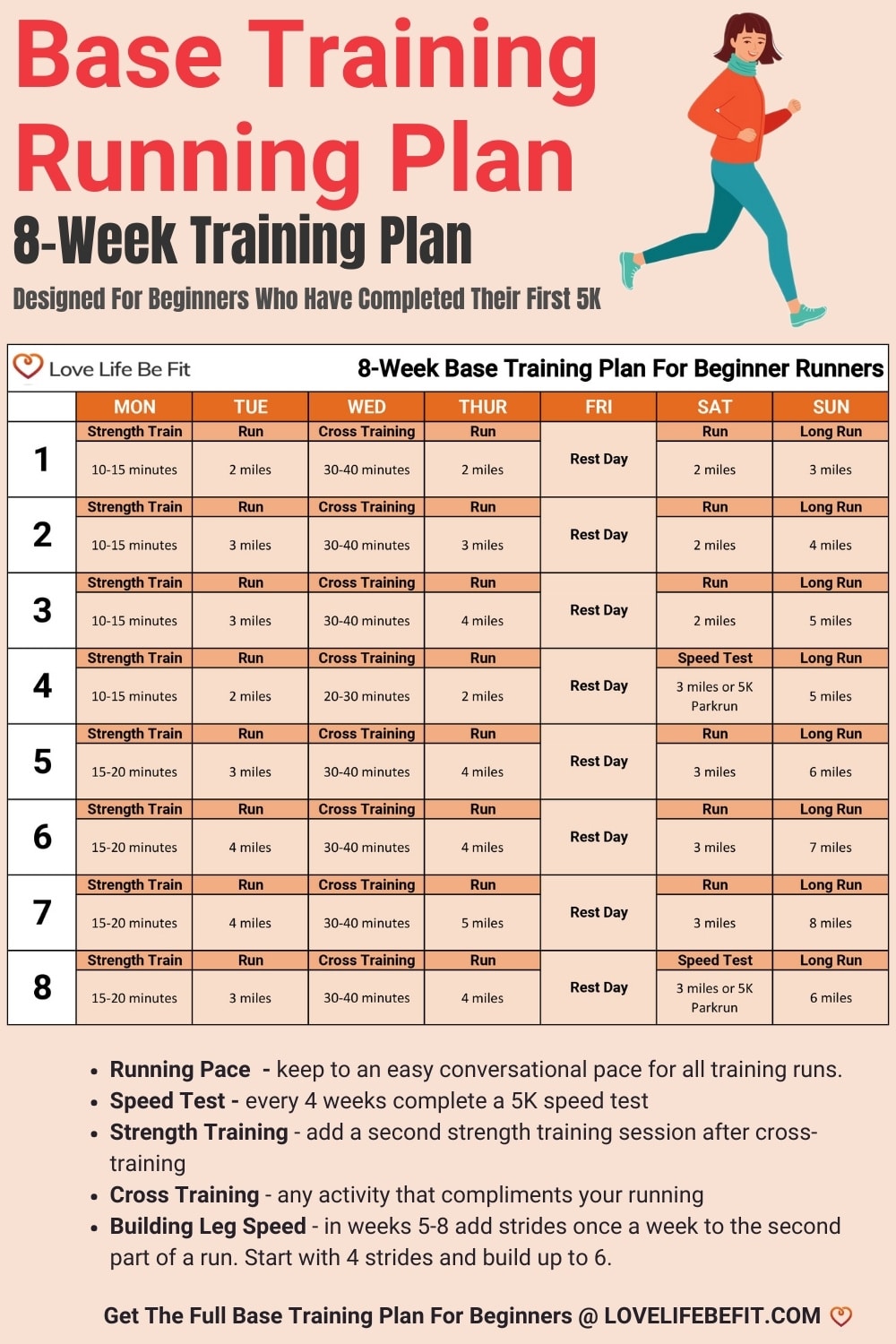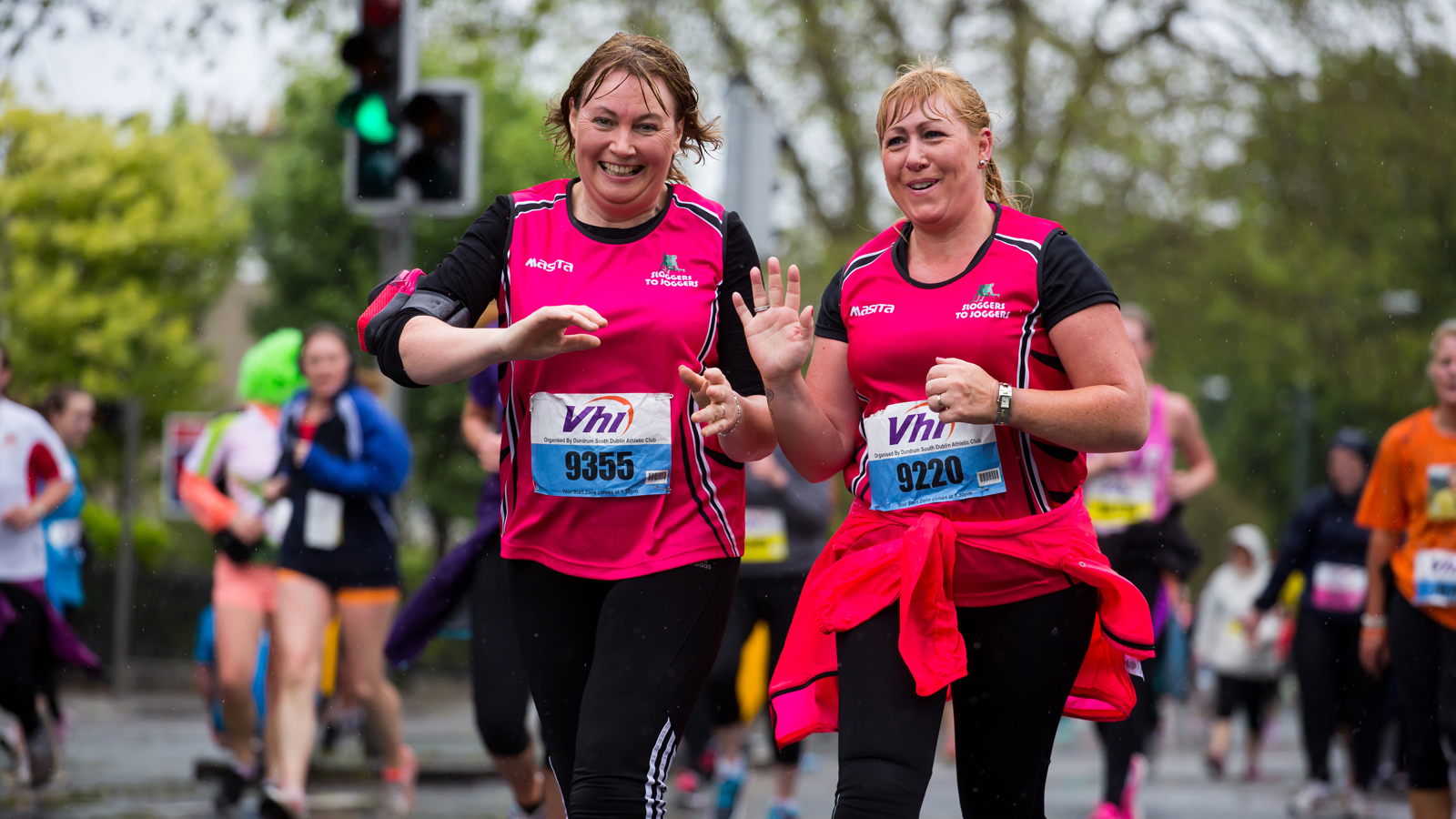How To Build A Running Base: Tips To Get Started
Base training is slow, easy-paced running with a high weekly mileage to build your aerobic fitness. It can build a solid foundation for your running and a resilient runner’s body less prone to injury.
Easy miles at low intensity allow your muscles, tendons, fascia, bones, and joints to strengthen and recover despite the frequent runs. You’re building your aerobic running base and the endurance you need for distance racing.
Base building should be an important part of any runner’s training cycle – get it right and you’ll be fully prepared for any race-specific plan from 800m distance running to marathon training.

Tips To Build A Running Base
These tips will help you get the most from your base training phase:
#1 Your Base Training Plan
Use one of our base training running plans or build your own. The key to a successful training cycle is starting at your current weekly mileage base and increasing your running mileage slowly.
The 10% rule works as a good guide – don’t increase your total weekly mile or the length of your long run by more than 10% per week.
#2 How Many Running Days Per Week
There’s no hard and fast rule. It will depend on what your body is used to and how many days you can make time to run.
Just be sensible – don’t jump from running 3 days a week to 6 days a week.

#3 Rest Days
Most runners will benefit from at least one full rest day per week and some will need at least two. If you’re new to running or injury prone make sure you get adequate rest. The running may be low-intensity, but overdo it and there’s still an injury risk.
#4 Slow Down
This is low-intensity, easy-paced running. You’re running at a relaxed pace. If you find yourself speeding up and pushing the pace – slow down!
Take short breaks or walking breaks when you need to, your only aim is clocking the miles.
#5 How Many Miles?
This depends on your running history and your current level of fitness. A base training plan for a beginner runner could be as little as 10 to 20 miles per week. For an experienced runner, it could be 50+.
Base mileage for experienced runners
It’s best to start your base training just below your previous average weekly mileage. Note this is average and not peak mileage. If you’ve just completed a race and taken a few weeks off to recover, start at a much lower mileage but build back faster than the 10% rule.
For example, if you’ve been training for a marathon running at a peak of 40 to 50 miles a week followed by one month of rest or low mileage, ease back into running at 15 to 20 miles a week but build back faster at 5 -10 mile per week increments until you’re back up to 40+ miles. If you’re extending your mileage above 40 miles, revert to the 10% rule.
Just be aware of any persistent niggles and adjust your mileage if you find you’re not recovering sufficiently between running sessions.
Base mileage for new runners
If you’ve just started running, it’s best to follow one of our Couch To 5K Plans first to build up to running consistently.
If you’ve already completed your first 5K, our Base Building Running Plan For Beginners is ideal.

#6 Training Cycle
Every 3 to 4 weeks it’s best to ease off the mileage and give your body a little rest. You may be running at an easy pace, but you’ll still feel the benefit of throwing in a slightly lower mileage week. Aim for 15 to 20% lower.
#7 Heart Rate
If you normally wear a chest-strap heart-rate monitor, aim for less than 75% of your maximum heart rate for your easy-paced runs.
As a rough estimate, your maximum heart rate can be calculated as 210 minus your age. Multiply by 0.75 to get your target heart rate.
Wrist devices are less accurate but you’re probably running at the right pace if:
- The pace feels easy
- You can run and talk without getting out of breath.
#8 Ignore Your Running Pace
Your base pace can vary significantly from day to day. Mine can vary by 2 minutes per mile! How fast is “easy” will depend on the time of day, your fueling, how far you’ve run that week… there are so many different factors affecting your day-to-day running speed.
If possible, avoid looking at your watch and run to feel. If it feels easy you’re running at the right pace.
#9 Add A Speed Test
Every 4 weeks it will help your motivation if you add a speed test. We suggest a 5K Parkrun if you’re lucky enough to have one near you but otherwise complete a fast-paced run over a favorite 3-mile or 5K course.
Warm up properly before your test run and cool down afterward. A speed test isn’t as much pressure as a race but should help you gauge if your running is improving.

#10 Strength Training
Base training is a good time to focus on your weaknesses. Try adding strength training twice a week to your schedule. It doesn’t have to be lifting weights – most runners will see significant benefits from bodyweight exercises.
Work on your muscle imbalances, not just your muscular strength. Most runners will have a dominant side. Strengthening the weaker side of your body will not only improve your running form but will help you stay injury-free.
#11 Maintain Leg Speed
Adding strides is a good way to maintain or improve leg speed when the bulk of your training is long slow distance work. We suggest adding strides in the latter half of your base training plan.
Add strides in the middle or at the end of your run 1-3 times per week. Run fast for 10 to 25 seconds then jog for up to 2 minutes depending on feel. You should be fully recovered before the next stride.
Start with just 4 strides and increase the number you run gradually. Beginners will run around 4 to 6 strides, intermediate runners can build up to 8 to 10 and experienced runners will aim for 10+.
Find out more about strides in our post how to run a mile faster.
#12 Easy Effort
It’s tempting to add tempo runs, hill sprints, or fartleks to your base phase but this contradicts the reasoning behind base training – long slow easy runs to improve your aerobic capacity.
Save the harder sessions for your next phase when you start race-specific training.
#13 Typical Training Schedule
The tables below provide examples of a typical training schedule for different mileage targets. Instead of running the same distance every day, it’s best to vary your runs throughout the week to aid recovery. Always build up to your mileage target gradually remembering the 10% rule.
20 Mile Target
| Mon | Tue | Wed | Thur | Fri | Sat | Sun |
| Rest | 4 miles | Cross train | 5 miles | Rest | 3 miles | 8 miles |
30 Mile Target
| Mon | Tue | Wed | Thur | Fri | Sat | Sun |
| 4 miles | 5 miles | Cross train | 7 miles | Rest | 4 miles | 10 miles |
40 Mile Target
| Mon | Tue | Wed | Thur | Fri | Sat | Sun |
| 5 miles | 8 miles | Cross train | 9 miles | Rest | 6 miles | 12 miles |

#14 Embrace Slow Running
Instead of thinking of base training as boring, try and enjoy running at a slower pace. There’s less pressure than running at a faster pace and you’ll know that every mile you run is helping to build a strong aerobic engine.
The vast majority of runners can run fast over a short distance. It’s being able to maintain a good pace over a longer distance that’s challenging. This is how base training helps – with a good running base you’ll be able to run faster for longer. Run slow to run fast and improve your fitness level!



